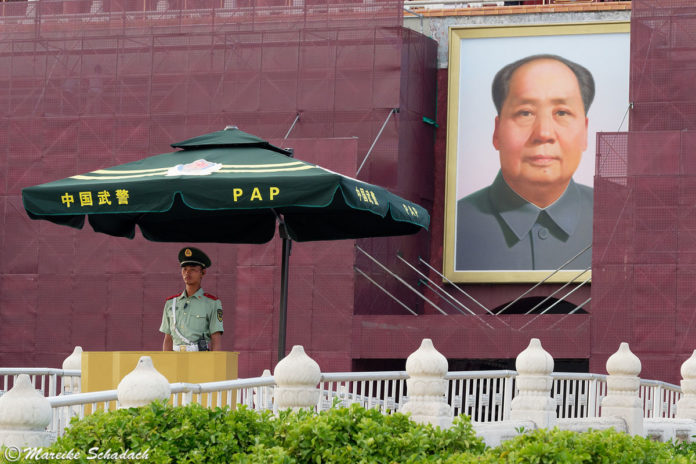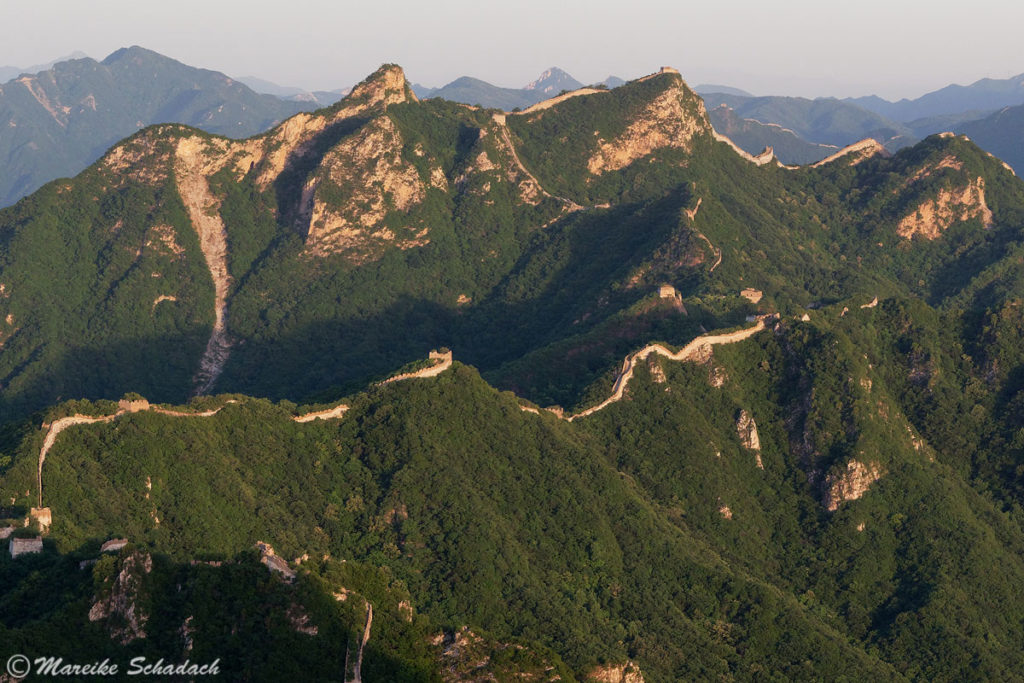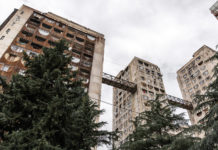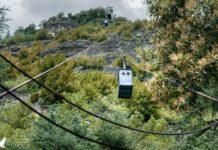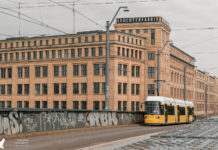China. I'm standing at the northern end of Tiananmen Square. Mao hangs diagonally above me. He is watching me. And also all the others who are moving on the square. His gaze shines over the whole northern half of Tiananmen Square and acts like a magnet. Hardly anyone passes the Mao portrait without taking a photo or Selfie. It is the most frequently photographed image of a person. The Mao portrait on Tiananmen Square became a myth and later a branded article of China. It has a long history and I wanted to know what is left of it today. Meet Mao and find out in my following article what to expect at Tiananmen Square and when visiting the Mao Mausoleum.
Unassigned, unpaid advertising. The article contains affiliate links.
Table of Contents and Quick Navigation
Meeting Mao in China
Myth and branded Goods of China
A Picture of Records
The Mao Portrait as a Symbol of Protest
Icon of Pop Culture
Protests against Mao Cult of Personality
The Mao Portrait at Tiananmen Square
And today?
Meeting Mao in China
It is lunchtime, it is hot and the place is still relatively empty. I watch the tourists taking pictures of themselves in front of Mao. Every minute Mao is photographed about twenty times. I return to the Mao portrait two more times. The first time in the evening after sunset. The Chinese flag in Tiananmen Square has just been taken down. The second time after the end of the Forbidden City's opening hours. I can't count the photos and selfies now taken with Mao.
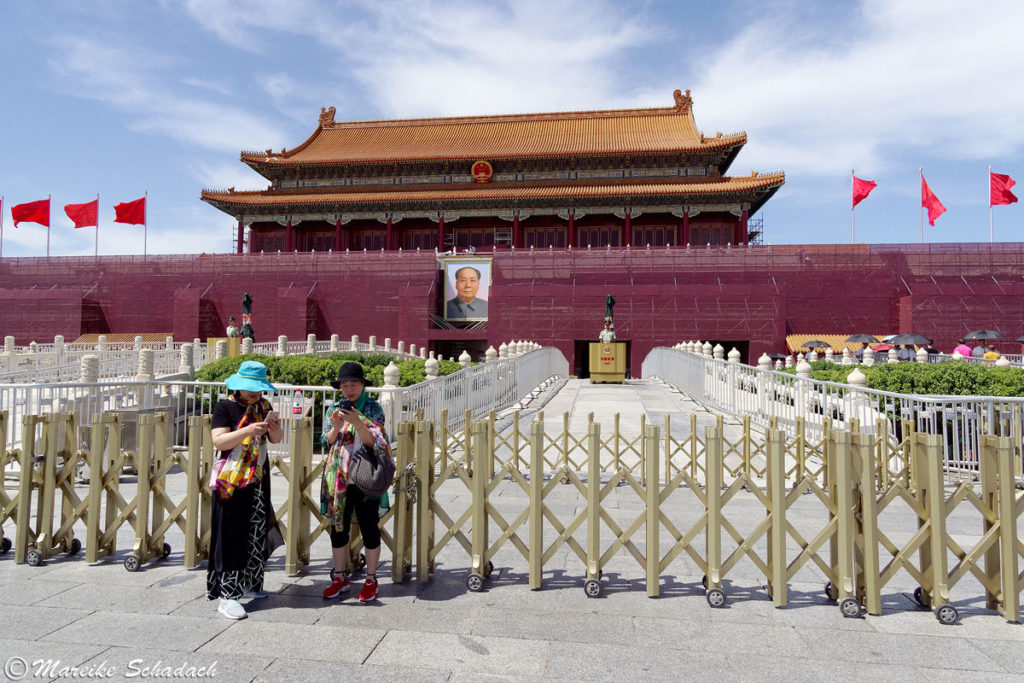
Myth and branded Goods of China
Tiananmen Square is the largest fortified public square in the world. It is framed by the Gate of Heavenly Peace with the Mao Portrait in the north. The Mao mausoleum is on the southern side. In addition, enormous buildings in the style of socialist realism rise on the right and left. One building is the Chinese National Museum, the other is the Great Hall of the People. The Chinese flag also flies on the square itself. A ritual flag ceremony is held there daily at sunrise and sunset. Learn more about the Flag Ceremony at Tiananmen Square.

Mao Zedong was Chairman of the Central Committee (CC) of the Chinese Communist Party (CCP) from 1949 to 1976. Since September 30, 1949, his portrait has hung over the Gate of Heavenly Peace. Above it is the tribune from which Mao proclaimed the People's Republic of China in 1949. A place of historical importance.
Until the Cultural Revolution, however, the portrait was only shown twice a year for about ten days each time. Due to the deliberate scarcity of the presentation of the painting, the Mao portrait received even more attention. Since 1966, however, the picture has been permanently visible. In 1976, the year of his death, however, a black-and-white photograph hung in place of the color portrait.
During my visit, the Gate of Heavenly Peace is scaffolded and veiled due to construction work. Only the Mao portrait is freely visible. As a result, Mao appears even more present, as the gaze is directed even more strongly to the portrait.

A Picture of Records
The Mao portrait is a picture of superlatives: at 6.40 metres high and 5 metres wide, it is the largest portrait of a ruler in the world. With a weight of over a ton, it is probably also the heaviest. However, it is certainly the most frequently reproduced portrait of a human being ever. On the Mao Bible alone, it was spread about 2.2 billion times until 1968.
In the People's Republic of China the portrait was omnipresent: in public buildings, schools, private homes and on propaganda posters. In addition, countless photos were taken of the image. It became a devotional image to which redemption and even miraculous qualities were sometimes attributed. Mao words were recited in front of the picture, loyalty dances were performed or, in addition, fanatically copies were made. The US satirical magazine The Onion finally put it in a nutshell: "Giant Mao poster wins power in China". This was the headline of a fictional report from Beijing on October 2, 1949. His portrait is still omnipresent today. Because it is depicted on Chinese banknotes: whether 1, 5, 10, 20, 50 or 100 Yuan - the same image of Mao is on all of them.
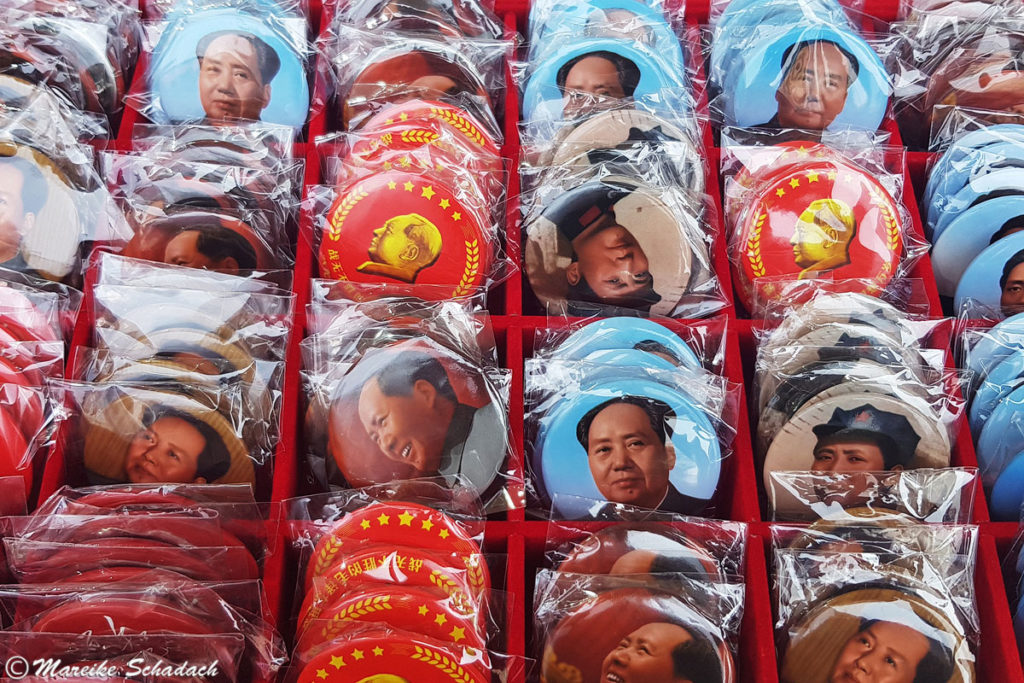
The Mao Portrait at Tiananmen Square is at once idol, art object, myth and brand. But above all, it is an illusion that is intended to convey a consciously created image. Namely, the image of an ageless, fatherly, godlike leader hovering above the masses. Both background and ruler symbols are deliberately avoided. By choosing a simple grey uniform jacket the person Mao is lifted into the foreground. The grey jacket later became famous as the so-called Mao suit.
The Mao Portrait as a Symbol of Protest
Mao's policies meant death for millions of Chinese. Nevertheless, the portrait became an icon of the anti-authoritarian protests of the 1960s. From 1967 onwards, it also became a symbol of the student movement in Western Europe and the USA. Mao thus became a symbol of protest against consumer society and capitalism.
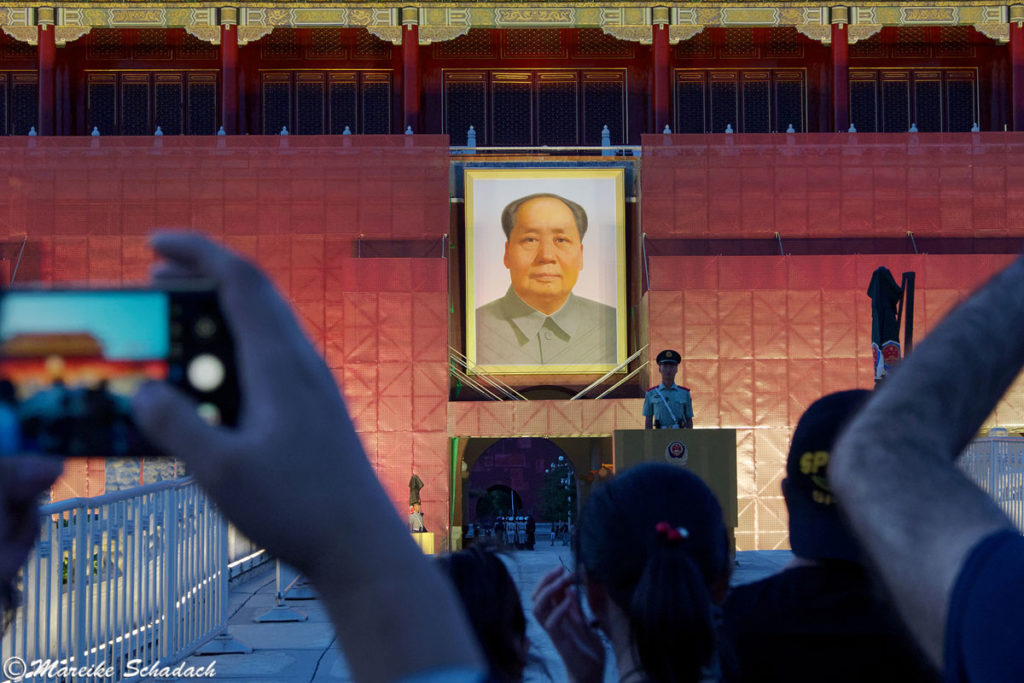
Icon of Pop Culture
After President Nixon's visit to China in 1972, Andy Warhol created a series of colorful silkscreens that made Mao an international pop icon. In the process, Mao was alienated, his image de-ideologized and torn out of its historical context. The portrait of a dictator, or later the symbol against capitalism, ultimately became itself an expensive article on the capitalist art market. For this reason, originally signed silkscreens are currently offered for up to 210,000 dollars.
Protests against Mao Cult of Personality
But the Mao portrait in Tiananmen Square was also the target of political protest. In the spring of 1989, more than 200,000 demonstrators gathered in Tiananmen Square. Three young men carried out a colour attack and demanded an end to the personality cult. The climax of the protests was finally the erection of the "Goddess of Democracy" opposite the Mao portrait. In the end, the government crushed the demonstrations bloody and a tank brought down the goddess of freedom. You may remember the moving scene filmed by reporters on June 5, 1989: a demonstrator stops a column of tanks in Tiananmen Square. The man later became known in the West as "Tank Man".
The Mao Portrait at Tiananmen Square
A visit to the Mao Mausoleum on Tiananmen Square is one of the highlights of a stay in Beijing and should definitely be on your to-do list. Many Chinese tourists come here to honour Mao and to see his embalmed body. The personality cult around Mao is still very much alive here in the mausoleum. Read more about my impressions from the Mao Mausoleum here .
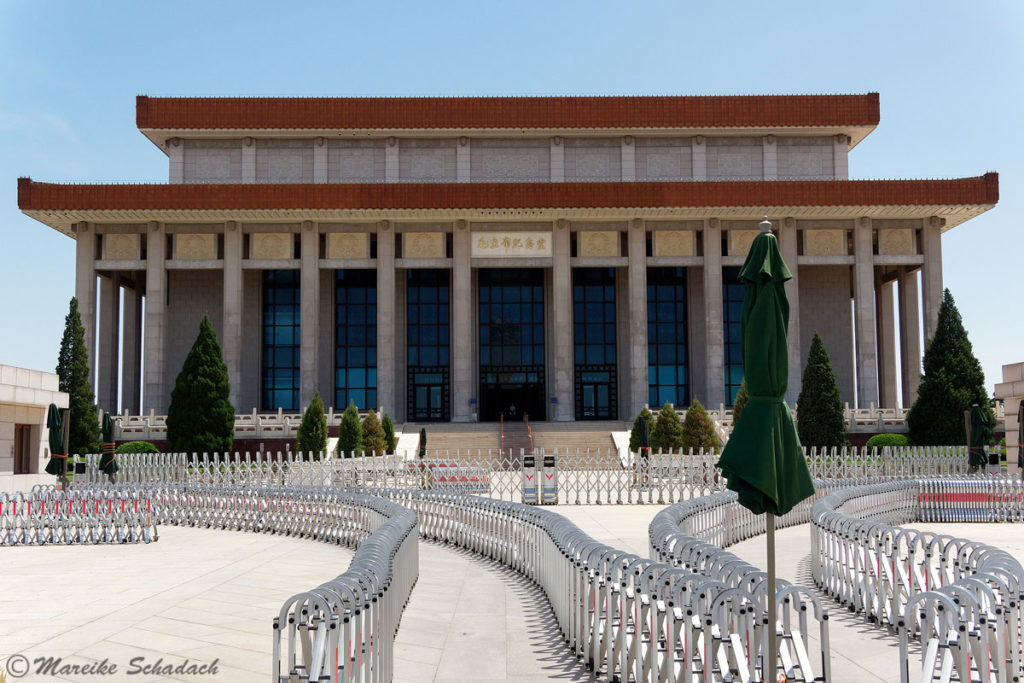
And today?
Mao is still present in today's China, even if the ideological cult has given way to a rather apolitical everyday cult. The souvenir shops offer refrigerator magnets and T-shirts with Mao print. In the hotels, snack bars and restaurants I visited, however, I did not see any Mao portraits hanging. Possibly, the picture broke another record: the most frequently disposed picture in the world. Who knows.
Do you need a break from the big city and want to get some fresh air? Then I can warmly recommend a tr ip to the Great Wall of China near Jiankou. Here you can read my article about a selfguided Hiking Tour on the Wall from Jiankou to Mutianyu.
Book Recommendations for China
You want to know where the journey goes? Then I can recommend these books* about China.
You can order these books at Amazon with a click on the pictures. If you buy a product via one of these affiliate links, I get a small commission and you help me to keep filling Fernweh-Motive with interesting articles. The product will not be more expensive for you.
Have you ever been to Beijing yourself and seen the Mao portrait in Tiananmen Square? How did you like it? Do you have any questions about my article or any other suggestions? If so, please write me a comment!
Do you want to know when there are new articles on my blog? Then follow me on Facebook, Pinterest or Instagram. I would also be very happy if you share my article with your friends.
